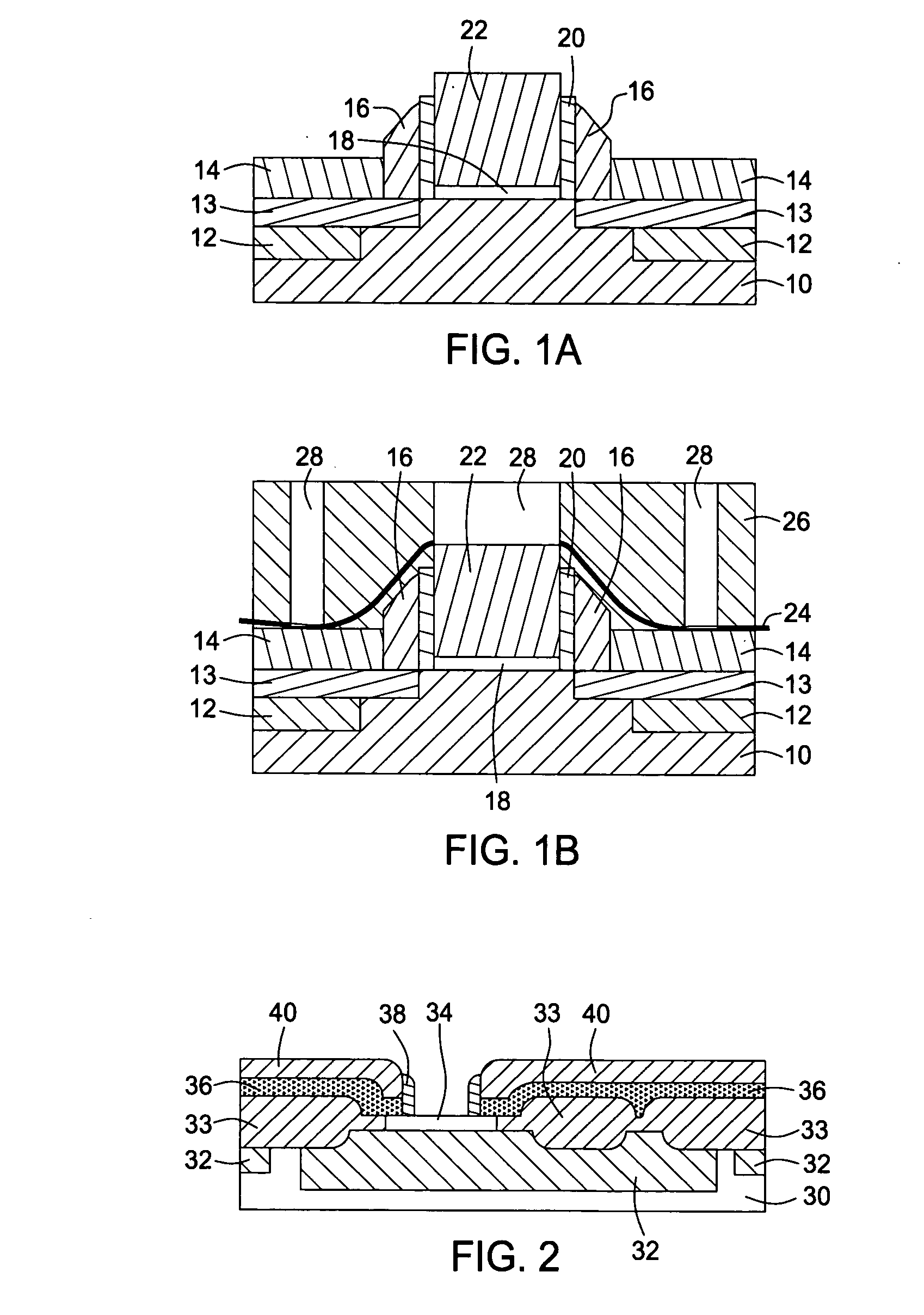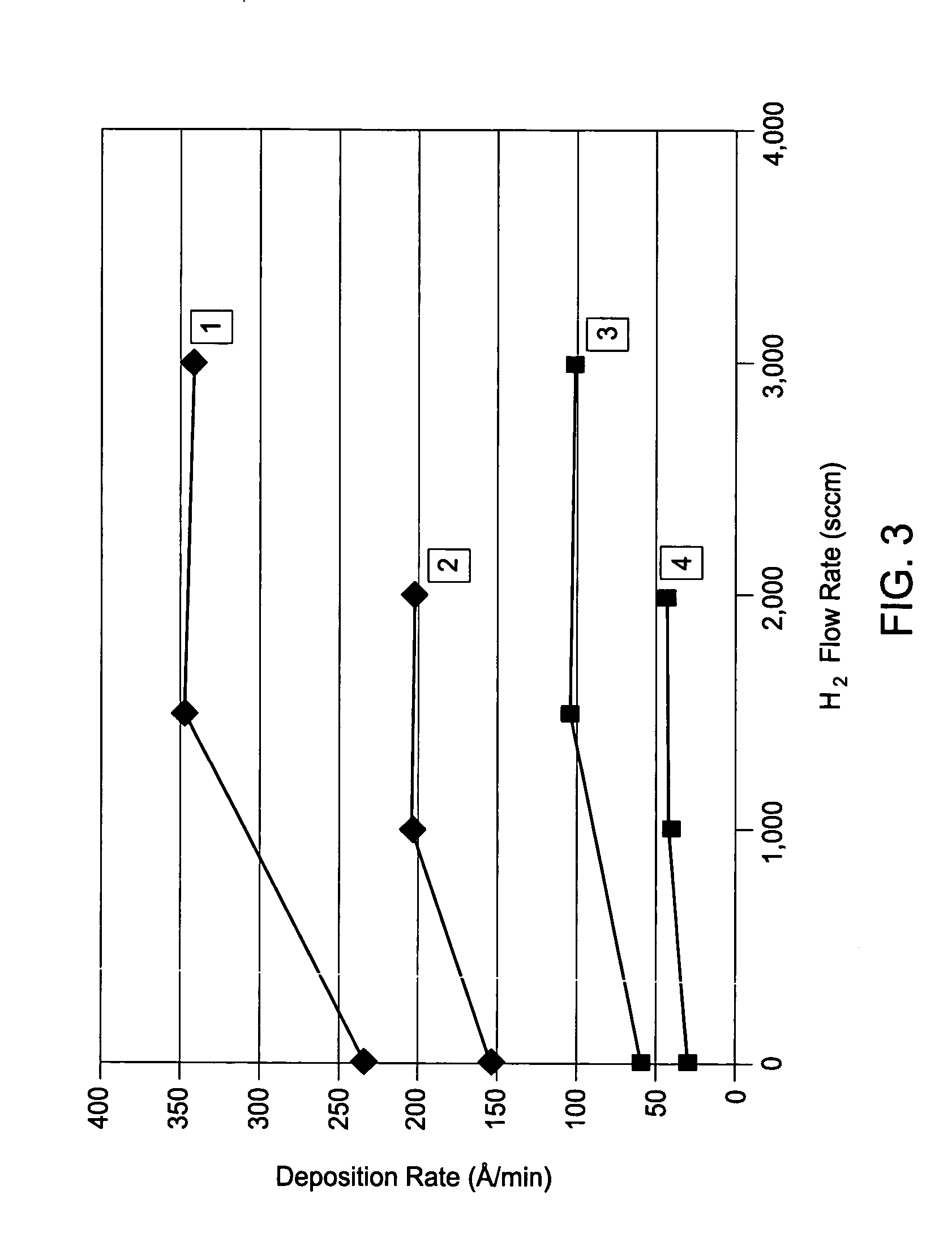Low thermal budget silicon nitride formation for advance transistor fabrication
a technology of silicon nitride and silicon nitride, which is applied in the direction of chemical vapor deposition coating, solid-state devices, coatings, etc., can solve the problems of low dissociation efficiency, significant disadvantage for future applications regardless, and the damage of plasma ions in the active transistor region of the devi
- Summary
- Abstract
- Description
- Claims
- Application Information
AI Technical Summary
Benefits of technology
Problems solved by technology
Method used
Image
Examples
example 1
[0047] A 300 mm substrate has placed into the process chamber and maintained at about 550° C. at a pressure of about 250 Torr. A process gas containing hydrogen gas (H2) with a flow rate of about 2,000 sccm and BTBAS ((tBu(H)N)2SiH2) with a flow rate of about 50 sccm was exposed to the substrate surface. A silicon nitride material was deposited at a rate of about 60 Å / min for about 5 minutes to produce a film with a thickness about 300 Å.
example 2
[0048] A 300 mm substrate has placed into the process chamber and maintained at about 475° C. at a pressure of about 450 Torr. A process gas containing silane (SiH4) with a flow rate of about 1,000 sccm and BTBAS with a flow rate of about 30 sccm was exposed to the substrate surface. A silicon nitride material was deposited at a rate of about 50 Å / min for about 5 minutes to produce a film with a thickness about 250 Å.
example 3
[0049] A 300 mm substrate has placed into the process chamber and maintained at about 425° C. at a pressure of about 450 Torr. A process gas containing disilane (Si2H6) with a flow rate of about 1,000 sccm and BTBAS with a flow rate of about 25 sccm was exposed to the substrate surface. A silicon nitride material was deposited at a rate of about 40 Å / min for about 5 minutes to produce a film with a thickness about 200 Å.
PUM
| Property | Measurement | Unit |
|---|---|---|
| temperature | aaaaa | aaaaa |
| temperatures | aaaaa | aaaaa |
| temperature | aaaaa | aaaaa |
Abstract
Description
Claims
Application Information
 Login to View More
Login to View More - R&D
- Intellectual Property
- Life Sciences
- Materials
- Tech Scout
- Unparalleled Data Quality
- Higher Quality Content
- 60% Fewer Hallucinations
Browse by: Latest US Patents, China's latest patents, Technical Efficacy Thesaurus, Application Domain, Technology Topic, Popular Technical Reports.
© 2025 PatSnap. All rights reserved.Legal|Privacy policy|Modern Slavery Act Transparency Statement|Sitemap|About US| Contact US: help@patsnap.com



